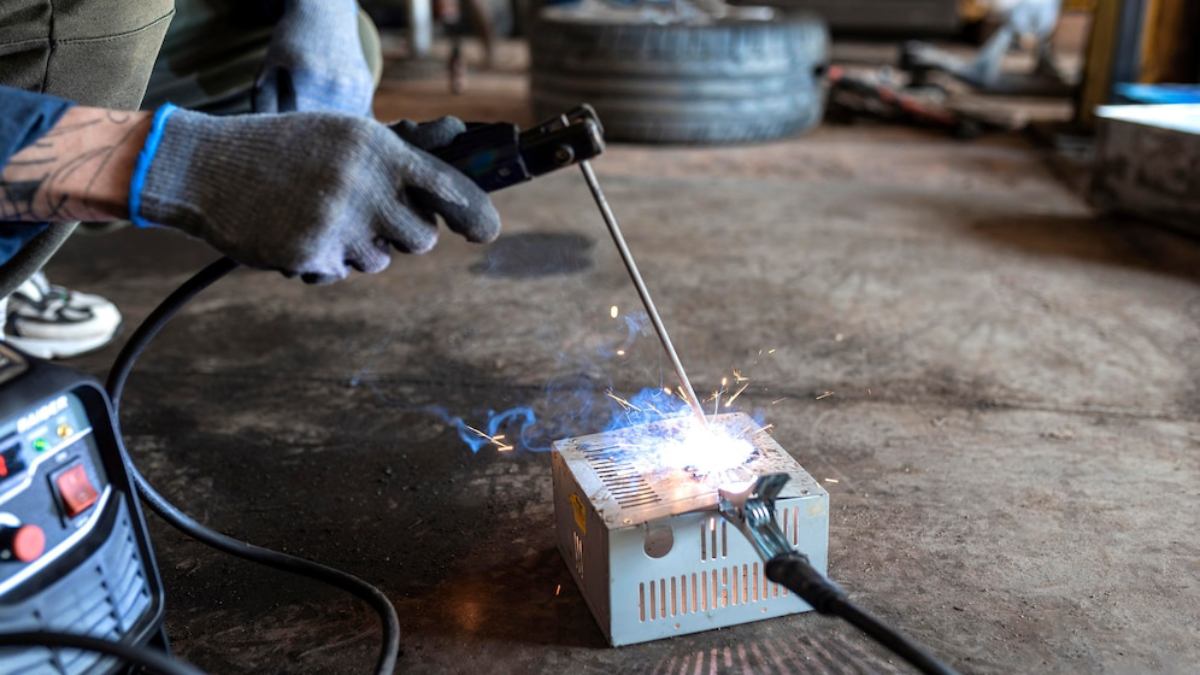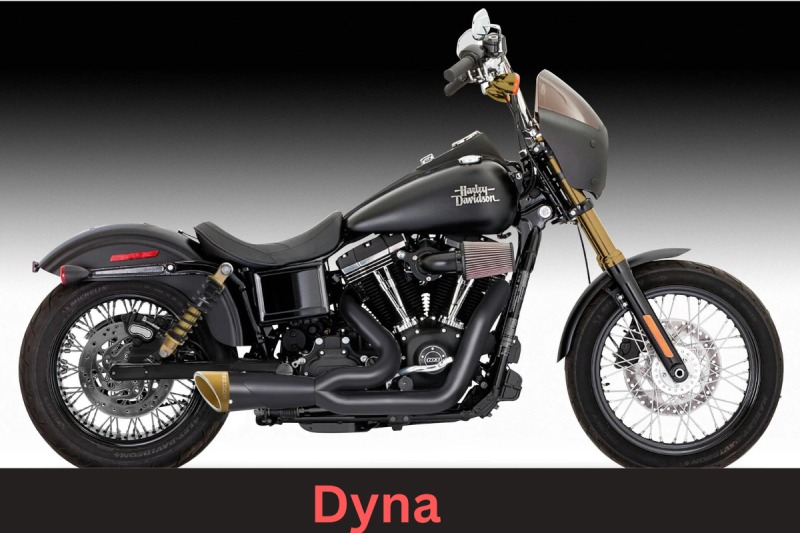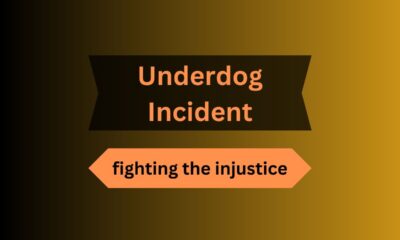Blog
The Art of Proactive Security: Comprehensive Vulnerability Management

Proactive security through comprehensive vulnerability management involves identifying, assessing, and addressing potential risks before they become threats. Organizations can prevent cyberattacks and protect sensitive data by regularly scanning systems, prioritizing vulnerabilities, and implementing timely patches. This approach also includes staying informed about emerging threats and continuously improving security measures. Proactive vulnerability management enhances resilience, minimizes risk, and ensures the overall safety of an organization’s infrastructure, promoting a solid defense against evolving cyber threats.
Introduction
In today’s digital era, where data breaches and cyber threats are rampant, ensuring your organization’s resilience and security is not just beneficial—it’s essential. Effective vulnerability management is at the heart of a strong defense strategy, which serves as a structured approach to identifying, mitigating, and rectifying system weaknesses. A vulnerability management plan is crucial for companies to protect their resources from increasing cyber threats.
Cyber-attacks are not just an occasional occurrence but a regular part of the digital landscape. This reality makes vulnerability management more important than ever, ensuring organizations can strategically manage their defenses and safeguard critical data. By adopting a systematic vulnerability management strategy, businesses protect their assets and uphold their reputation and customer trust.
Understanding What Vulnerabilities Are
In cybersecurity, vulnerabilities represent weaknesses or flaws in a system that expose it to potential harm. Malicious actors can use these flaws to obtain unauthorized access or interfere with system functionality. As emphasized by CISA, organizations must identify these vulnerabilities within their systems to address and reinforce their defenses preemptively. Detection often involves scanning systems for known vulnerabilities and evaluating their potential impact on organizational operations and data.
Why Vulnerability Management Is Essential for Businesses
The importance of a vulnerability management strategy extends beyond simple patching of system weaknesses. It is an integral aspect of a company’s broader risk management framework and crucial in preserving its integrity and reputation. Cyberattacks’ growing sophistication and frequency make vulnerability management essential to any robust security plan. It enables businesses to foresee risks, deploy resources wisely, and guarantee adherence to legal requirements.
Critical Components of Effective Vulnerability Management
- Identification and Assessment: The foremost step involves discovering and assessing vulnerabilities within systems to understand their nature and potential risks.
- Prioritization of Risks: Not all vulnerabilities have the same potential impact. Effective management involves assessing and categorizing vulnerabilities to determine which pose the highest risk and deserve immediate attention.
- Remediation and Mitigation Plans: Developing and implementing strategies to address identified vulnerabilities is essential, whether through patching, applying fixes, or employing other security measures.
- Monitoring and Reporting: Ongoing supervision is necessary to evaluate the actions’ success and ensure that systems are strengthened against new threats.
Implementing a Proactive Approach
Adopting a proactive security stance is significantly beneficial for organizations. Businesses that adopt a proactive approach can foresee and mitigate possible hazards instead of just responding to them when they materialize. As security experts from ISACA recommended, incorporating predictive analytics and transitional planning into security protocols can help organizations build a proactive and robust defense strategy.
Leveraging Technology and Tools
Recent technical developments have brought out many technologies that improve vulnerability management’s effectiveness. These range from automated vulnerability scanners that detect potential threats to sophisticated AI-driven threat intelligence platforms that provide real-time analysis of emerging threats. By leveraging such technologies, organizations gain actionable insights, streamline processes, and ensure their security efforts are comprehensive and manageable.
Best Practices for Continuous Improvement
Continuous improvement is vital for sustaining an effective vulnerability management strategy. Essential components of this process are keeping staff updated through regular training, integrating new technological solutions, and regularly revisiting policies. Cultivating a culture of security awareness throughout an organization bolsters its overall security posture and ensures that vulnerabilities are promptly identified and addressed.
Real-Life Examples of Effective Management
Several successful enterprises illustrate the positive impacts of adopting a practical vulnerability management framework. For example, a leading technology firm was able to substantially strengthen its defenses by implementing a layered security approach. This involved the application of innovative technological tools and a comprehensive reshaping of internal processes and security protocols, resulting in a resilient and adaptive security strategy.
Future Trends in Vulnerability Management
Several trends are shaping the future of vulnerability management. Automation and artificial intelligence (AI) will become increasingly important, simplifying procedures and improving the capacity to recognize and react quickly to dangers. Furthermore, greater collaboration among industry leaders is anticipated, promoting collective innovation in addressing cyber threats. This evolution promises to strengthen the resilience and effectiveness of future cybersecurity strategies
Blog
From Hobbyist to Professional: Mig Welder Machine Value

From a laid-back hobby to a professional level, your game needs to be improved using suitable equipment. One very useful tool with enormous influence is the MIG welder. This tool has drawn attraction among both amateur and professional welders for its versatility and efficiency. Let’s discuss the major benefits of owning this excellent tool and how it might help your welding work.
Simple Applications for Novices and Professionals
One obvious advantage of a well-created welding machine such as MIG welding from Bilba suppliers is simplicity. Unlike other welding methods, it begins with a basic setup, and highly specialized expertise is not required. The machine runs simply depending on a constant wire supply. Regardless of your degree of knowledge or the beginning point for your welding career, such equipment allows you to produce tidy and strong welds with little effort.
Moreover, the machine is ideal for light and heavy-duty tasks; so, as your skills advance you may manage more challenging projects without having to purchase a new machine.
Enhanced Velocity and Efficiency of Mig Welding Processes
In business especially, time is money. In terms of efficiency and speed, the MIG welder does really well. The continuous wire feed, unlike stick welding, removes the requirement for stops and reload. This helps you to work faster and finish tasks more quickly.
The speed exists also without compromising the quality of the welds. Professionals who have to raise production without sacrificing precision will find this tool invaluable, as it lets you rapidly and very accurately weld thicker materials.
Flexibility Among Various Metals
One of the reasons both specialists and aficionados respect this equipment is its versatility. For all types of operations, a gas MIG welder is a go-to tool for working with numerous metals, including mild steel, aluminum, and stainless steel. This capability enables welders to improve their skills and investigate many materials.
Professionals should therefore be freer and able to accept a spectrum of work without changing the machine. Apart from welding operations, the gas MIG welder can manage heavy machinery, metal sculptures, and automotive parts.
Clearer, Stronger Welds
Precision is crucial in welding; one of the most appealing qualities of the MIG model is the clean, perfect welds it produces. Constant wire feed reduces the possibility of spatter or mess, as it provides a perfect material flow. This produces a neat finish calling for little post-weld cleaning.
For those attempting to create work of professional quality, where look and durability matter, this feature is very useful. Whether you’re building a beautiful metal object or repairing machinery, this machine’s clean welds provide long-lasting results.
Economically Appropriate Investment
Another big benefit for anybody hoping to turn their welding hobby into a job is the pricing of the MIG machine. Apart from other types of welding tools, the first cost is somewhat low; yet, the efficiency of the machine helps save consumables such as electrodes and shielding gas. Its versatility also suggests that you won’t have to acquire multiple equipment for different types of jobs, therefore dramatically reducing your entire expenditure.
Furthermore, its quick welding method increases production, which finally increases money in commercial situations.
Years of Extended Use
Any professional tool should be robust, hence this machine helps to avoid disappointments. The MIG welder is designed to resist heavy use for those who want a consistent and durable tool. Its robust construction allows professionals and enthusiasts to depend on it for years without compromising performance, therefore permitting both constant use.
From ease of operation to outstanding performance throughout a range of metals, switching to a MIG machine offers a number of benefits. Investing in one of these products can enable you to get better outcomes with less effort, therefore opening the route from hobbyist to professional.
Blog
How Family Involvement Improves Success at an Addiction Recovery Center?

Addiction is a complex challenge that requires comprehensive recovery solutions. While individual treatment approaches, like therapy and medication, play a critical role, the involvement of family members can make a significant difference in the success of treatment at addiction recovery centers. Family support can provide emotional stability, strengthen motivation, and help maintain sobriety long-term. We will explore how family involvement, through communication, education, and emotional support, fosters a more successful recovery process. Understanding the pivotal role that family plays in this journey can change the perspective of how addiction is treated and managed.
Emotional Support: A Foundation for Recovery
One of the most profound ways family members can contribute to an individual’s success in addiction recovery is by providing emotional support. People undergoing treatment often struggle with guilt, shame, and a sense of isolation. These emotions, if left unchecked, can severely hinder the recovery process. Family members offer a safe space for expressing these feelings, allowing the person to confront their emotions without fear of judgment. This kind of support helps individuals recognize that they are not alone in their journey and that their family is invested in their well-being.
Furthermore, this emotional connection fosters a sense of accountability. When recovering individuals feel emotionally connected to their families, they are more motivated to stay committed to their treatment plans. This accountability can reduce the risk of relapse, as they understand their actions’ impact on their loved ones. Family involvement serves as a protective factor, helping individuals cope with stress and challenges that might otherwise lead them back to addictive behaviors.
Improving Communication to Facilitate Healing
Effective communication is another crucial component of family involvement in addiction recovery. Addiction often damages relationships, resulting in poor communication patterns that can worsen feelings of misunderstanding or resentment. By participating in the recovery process, family members can learn to rebuild trust and establish open lines of communication. Family therapy sessions offered at recovery centers are designed to address these communication breakdowns. These sessions allow the individual in recovery and their family members to express their thoughts and feelings in a controlled environment guided by a counselor. Family members learn strategies to communicate in ways that promote healing rather than triggering conflict. The improved communication extends beyond the treatment center as families develop healthier habits that can be sustained at home. Effective communication allows family members to become more attuned to potential signs of relapse and offer support before issues escalate. It also strengthens the individual’s sense of security, knowing they have people they can talk to when challenges arise.
Education and Awareness: Understanding the Disease
Family involvement in addiction recovery is not just about emotional and communicative support but also about becoming educated on the nature of addiction. Many family members may not fully understand the medical and psychological aspects of addiction, which can lead to judgmental attitudes or unrealistic expectations. Addiction recovery centers often provide educational programs designed to help families understand the science behind addiction, including how it affects the brain and behavior. These programs aim to shift family members’ perspectives from viewing addiction as a moral failure to seeing it as a treatable disease. With a better understanding, family members are more likely to be empathetic and patient, reducing feelings of frustration or resentment. Moreover, families equipped with knowledge about addiction can better support their loved ones by recognizing potential triggers and stressors. They can also assist in creating an environment that fosters long-term sobriety, such as removing substances from the home and encouraging healthy habits.
Creating a Relapse Prevention Plan
Family involvement is essential when developing a relapse prevention plan. Addiction recovery centers often emphasize the need for a well-structured plan that outlines how to manage potential triggers, stressors, and high-risk situations. While counselors and healthcare professionals offer strategies for relapse prevention, the family plays a key role in implementing these strategies in real life. A family involved in the recovery process will be more aware of potential triggers for relapse and can help the individual avoid those situations. For example, family members may work together to identify social gatherings or environments that could tempt their loved one to use substances again. By being mindful of these triggers, the family can help the individual navigate risky situations while maintaining sobriety. Additionally, families can serve as a source of encouragement and support during challenging times, reminding their loved ones of their progress and reinforcing their commitment to recovery.
Encouraging Healthy Lifestyle Changes
Recovery from addiction is not only about abstaining from substances but also about adopting a healthier lifestyle. Family members can encourage and participate in these lifestyle changes, making it easier for the individual to stay on the path to sobriety. Whether participating in physical activities together, preparing nutritious meals, or engaging in hobbies that promote mental well-being, family involvement in healthy habits significantly impacts long-term recovery. When the entire family adopts healthier routines, it becomes easier for the individual in recovery to maintain those habits. In turn, these changes reduce the likelihood of relapse, as healthier lifestyles often lead to improved mental and physical health, which can counteract some of the psychological triggers of addiction.
Family involvement plays a pivotal role in enhancing the success of a trusted addiction recovery center. Emotional support, improved communication, education, and active participation in relapse prevention and lifestyle changes are key aspects of a family’s contribution to recovery. We have explored how these factors combine to create a more supportive and stable environment for individuals undergoing treatment at addiction recovery centers. As families grow in their understanding of addiction and strengthen their bonds, they can significantly increase the chances of a successful, long-term recovery for their loved ones.
Blog
Harley Davidson Frame Types – A Complete Guide

There are very few companies that are ruling their respective industries even after a century of their foundation. Hardley Davidson is a legendary motorcycle company known for its high-performing bikes; they are widely acknowledged for producing quality bikes and are famous worldwide because of it. Founded in 1903, the company’s first bike was Model 0; since then, they have launched several models, fulfilling different needs of users and ruling the industry. Their first bike was capable of reaching 35 mph speed, a marvelous feat of that time; however, with time, they have advanced their technology and launched much better bikes.
The primary reason for their bike’s brilliant performance is the motorcycle frames used in it. Starting with simple bike frames, today’s bikes are being developed using high-end robust frames to support top speed and deliver quality. In this post, we will explore the topic of bike frames used in Harley Davidson’s legendary bikes, so let’s begin this exciting post.
Sportster

Competition is everywhere, and the British motorcycle market is not an exception. Today, it dominates the market, once facing stiff competition from brands like Triumph and Norton in 1957, when the company launched its first Sportster, “the XL.” The significant details of this motorcycle were the resemblance to K Series motorcycles of the Harley Davidson brand but with the enchanted engine, Ironhead, and other features.
Over the years, the brand continued to improve its quality and launched different versions for pro and native drivers. The defining factors of the bikes are its lightweight frame, easy-to-handle design, and low seating design. Due to its various models for both entry-level and seasoned bikers, this bike is a good option for first-time Harley Davidson users.
Softail

When it comes to unique frame bikes of the Harley Davidson brand, then Softail will definitely make it to the list. The distinctive feature of this bike is its concealed rear wheel suspension, which makes riders enjoy an aesthetic ride without any hassle. If you are someone who likes aesthetic vibes, then this Harley Davidson bike is ideal for you. In 1987, this Bill Davis-designed frame was used in the Softail; now, the bike has been significantly improved by the company, with enhanced features and new additions.
However, with the additions of new technology and facilities, the bike maintained its iconic look, whHarley-Davison users loveHarley-Davidson’s users love.
V-Rod

The V-Rod is a unique bike for V-twin racing; the motorcycle has specialties like a unique design, a strong engine, and more. The bike was launched in 2001; it has a separate air box and coolant filling. The design element is excellent, with features like a fuel tank under the seat, a powerful engine, and more. These features make this bike distinct from other Harley Davidson machines. The result of this bike was a learning of the brand; it motivated them to build more robust and performance-oriented bikes.
Now, the brand is producing this motorcycle. However, you can get this in the second-hand market.
Dyna

Launched in 1991, Dyna Glide’s frame’s design was inspired by models like Sportster and Touring. It has an elegant frame. The highlighting element of this bike is its powerful engine and lightweight construction. In comparison to Softail, the bike comes with twin rear shock absorbers; its hefty design, lightweight appearance, and powerful engine make it desirable for bikers. This bike is capable of giving a comfortable riding experience in bad roads also. Moreover, the customizable features provide a personalized riding experience.
Today, the bike is replaced with new models of Softail.
Touring

This bike is an ideal choice for long-distance riders. The touring bike was made using one of the oldest frames of the Harley-Davidson brand. It was manufactured to fulfill the demand for powerful bikes; as a result, the bike was launched with solid horsepower and torque, supported by a 74-cubic-inch large Twin engine.
The subsequent models of the bike came with enhanced features like wind protection, a large fuel tank, and other travel-friendly features that make it ideal for a long ride.
Trike

It is one of the earliest Harley Davidson products, the first version of the bike was launched around 1911, with basic features. Later on, after a few decades, the company launched an enhanced version of the bike, named Servi Car; it gained momentum and became a hit motorcycle.
In the early 2000 era, the bike was launched, aimed at regular bikers. The bike was different from usual Harley Davidson bikes. It was a more stable and rider-friendly bike.
Conclusion
Are you a bike lover like me? If yes, then Harley Davidson must be a known name to you. In this post, we covered some legendary bikes launched by this bike giant and talked about their frames. We hope that you like reading this post and found it informative, if so, then do share it with your friends and family.
-

 Entertainment5 months ago
Entertainment5 months agoBest Kickass Proxy List 2024 – 100% Working to Unblock to Access
-

 Lifestyle5 months ago
Lifestyle5 months agoBanging The Underdog Incident 2022
-

 Entertainment5 months ago
Entertainment5 months ago70+ TamilMV Proxy (May 2024) 1TamilMV Mirrors To Unblock
-

 Entertainment5 months ago
Entertainment5 months ago38+ TamilRockers Proxy (May 2024) New Links To Unblock
-

 Entertainment5 months ago
Entertainment5 months agoBest Piratebay Proxy List 2024 – 100% Working Sites
-

 Blog3 months ago
Blog3 months agoCy Kass – Family Detail of Alex Wagner and Sam Kass
-

 Blog2 months ago
Blog2 months agoVyvyManga – Best Website to Read Manga Online
-

 Game1 month ago
Game1 month agoCookie Clicker Unblocked – Detailed Guide To Play This Game




